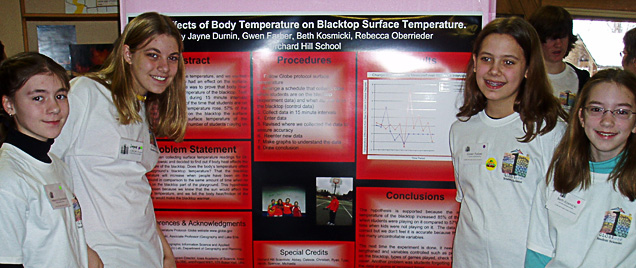26 November 2007 to 21 December 2007
26 November 2007 to 21 December 2007
The International Polar Year (IPY) goes from March 2007 to March 2009. We would like to get a head start and have students investigate the influence of snow on surface temperature. The field campaign is being held from the end of November through December in hopes that some schools will observe surface temperature with snow on the ground while other schools will not have snow on the ground. Students will have the opportunity to compare the temperatures observed for locations with snow and locations without snow. Snow cover is an important factor affecting Earth's weather and climate system. Snow reflects sunlight back to space and it insulates the atmosphere from the ground. Northern Hemisphere snow extent has decreased at a rate of about 4% per decade. (See: http://www.arctic.noaa.gov/detect/ice-snow.shtml.) Less snow leads to a positive feedback in the climate system, more sunlight is absorbed by the surface which can lead to warmer temperatures.
To participate in the project, we would like you to take surface temperature observations from two sites around your school, one in a large homogeneous grassy field (as large as possible), and the other in a nearby parking lot. The reason to do this is to compare the difference in the way that grass and paved surfaces change the sun's energy into heat or evapotranspiration.
In order to participate, a teacher needs to have been GLOBE trained in the new surface temperature protocol and have an infrared (non-contact) thermometer. Infrared thermometers (IRTs) are used in the auto repair, heating and cooling, and food preparation industries. If you do not have one, you may be able to borrow one from someone working in these areas. They can also be purchased online or Dr. Czajkowski has worked with a company who will give teachers a discount. Contact Dr. Czajkowski for the companys contact information. We use the Fluke 63 IRT, but there are others that can be used. You just need to specify the type of instrument that you are using. If you have not been trained in the surface temperature protocol or have any questions, please contact Dr. Kevin Czajkowski at kczajko@utnet.utoledo.edu. For more information, see SATELLITES/GLOBE. |
 Focusing on the
Focusing on the 
